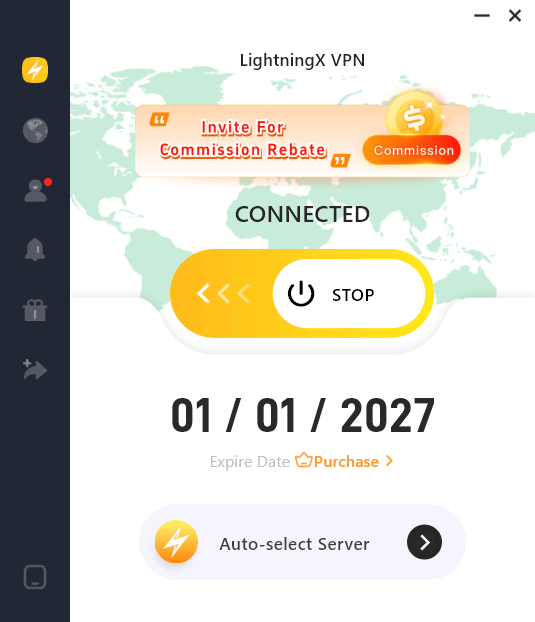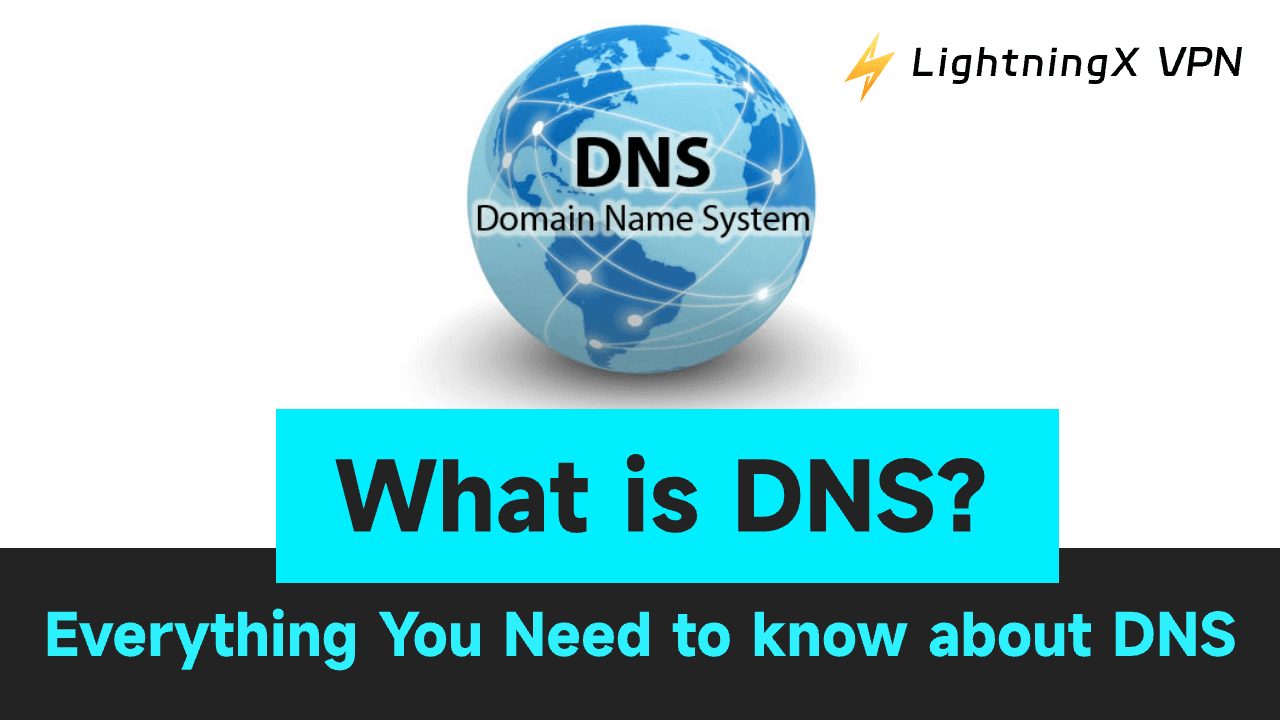Understanding what DNS is and how it works offers a clearer view of the internet’s foundation. It shows how billions of connections happen every second quietly, efficiently, and with remarkable precision.
What Is DNS?
Every time you type a web address like www.apple.com, your device doesn’t actually know what that means. Computers communicate using numeric identifiers called IP addresses, and the Domain Name System (DNS) is what translates those human-friendly names into the machine-readable codes that route your request. Without DNS, you’d have to remember long strings of numbers instead of simple website names, which is hardly practical for the modern internet.
Who Controls and Manages DNS?
But such a system can’t exist without global coordination.
That’s where ICANN, or the Internet Corporation for Assigned Names and Numbers, comes in. ICANN defines the rules and structure behind DNS, managing top-level domains like .com and .org, accrediting registrars that sell domain names, and distributing large pools of IP addresses to Regional Internet Registries (RIRs).
These registries, in turn, allocate IP ranges to internet service providers, hosting companies, and organizations around the world.
From there, the process becomes more local. When a company or website owner sets up a domain, their IT team or hosting provider creates DNS records that tell the world which IP address that domain should point to.
Cloud platforms like AWS, Google Cloud, or Azure host the actual servers that respond to these requests. At the same time, ISPs (Internet Service Providers) assign IP addresses to homes and businesses, ensuring each device has a unique way to connect.
So, when you visit a website, your request passes through a hierarchy, from ICANN’s global coordination to regional allocation, to the local DNS configuration that finally leads you to your destination.

Even VPN providers, such as LightningX VPN, are part of this ecosystem. They operate their own sets of IP addresses, leased or purchased from official registries.
When you connect through a VPN, your visible IP changes to one from the VPN’s network, masking your real location, helping you bypass geo-restrictions, and sometimes even improving speed and stability when your ISP throttles traffic.
In essence, DNS is the unseen infrastructure that keeps the internet orderly. It translates, connects, and directs, allowing billions of users to reach billions of destinations every single day, all in less than a second.
Tip:
LightningX VPN is an ultra-fast, stable, and secure VPN tool that offers 2000+ servers in 70+ countries. Use this tool to change your IP address, bypass geo-restrictions to unlock global information, and protect your online privacy.
Key Features of DNS
The Domain Name System isn’t just a phonebook for the internet; it’s a distributed, fault-tolerant network that makes global connectivity possible. Several key features define how DNS works in practice.
1. Hierarchical Structure
DNS operates on a tree-like hierarchy, starting from the root servers at the top, followed by top-level domains (TLDs) like .com or .org, and then the authoritative name servers that store records for specific domains. This structure allows billions of lookups to be handled efficiently and reliably every second.
2. Caching and Speed
To reduce lookup times, DNS uses caching. Once your device or browser resolves a domain, that result is stored temporarily. So, when you revisit the same website, the browser doesn’t need to ask the DNS servers again. It already knows the IP address, which greatly speeds up connections.
3. Redundancy and Reliability
DNS servers exist in clusters around the world. If one server fails, others automatically handle the requests. This redundancy ensures that even if parts of the internet go down, the system as a whole continues to function smoothly.
4. Load Distribution
DNS can balance traffic between multiple servers through techniques like round-robin DNS. This helps large websites or global services stay responsive and stable, even when millions of users access them simultaneously.
5. Security Extensions (DNSSEC)
DNS wasn’t originally designed with security in mind, but modern implementations use DNSSEC (Domain Name System Security Extensions) to verify that the responses you receive haven’t been tampered with. It adds a layer of cryptographic validation that prevents attacks like DNS spoofing or cache poisoning.
How Does DNS Work?
Think of DNS less as a single system and more as a network of cooperating databases. It isn’t owned by any one company or government.
Instead, it’s a globally structured system made up of layers, root servers at the top, followed by top-level domain servers, and then the authoritative name servers that hold the actual domain records. This decentralized setup is what keeps the internet stable even when parts of it go offline.
Each domain has its own ‘zone file,” a small database that maps hostnames to IP addresses and other information like mail servers (MX records) or aliases (CNAMES).
These records sit on authoritative servers managed by the organization that owns the domain or by its hosting provider. When you register a new website, you’re essentially creating a new entry in this worldwide phonebook.
What makes DNS work efficiently is how it shares and remembers information. Once a resolver looks up an address, that data gets stored temporarily – a process called caching.
Every cached entry has a time to live (TTL) value, which tells the system how long it can rely on the stored data before checking again. This mechanism is why DNS can handle billions of lookups a day without melting down under its own traffic.
Most of the time, DNS queries travel over UDP, a lightweight protocol that trades guaranteed delivery for speed. For tasks that require reliability, like transferring full zone files between servers, DNS switches to TCP, ensuring data arrives intact.
How Does DNS Improve the Speed of Websites?
For a predetermined period of time, servers may store the IP addresses, or A records, that they obtain from DNS queries in cache. By facilitating speedy responses from servers, the next time a request for the same IP address is made, caching increases efficiency.
For instance, the local DNS server would only need to resolve the name once, and it could then serve all subsequent requests from its cache if every employee in the office needed to view the same training video on a certain website on the same day.
Administrators choose the record’s retention period, which is sometimes referred to as its time to live (TTL) and is dependent on a number of variables. Shorter time intervals guarantee the most precise results, while longer ones lessen the strain on servers.
The same principle applies beyond regular browsing. DNS performance can directly affect latency-sensitive activities like online gaming, where milliseconds matter. Choosing one of the best DNS servers for gaming can reduce lookup delays and create a smoother, more responsive experience – especially when every frame counts.
Types of DNS
DNS is more like a relay team, where each runner passes the baton until your device gets the final answer. Different parts of the system specialize in different tasks, and together they keep lookups fast and reliable.
The first stop is the recursive resolver. This is usually run by your internet provider or a public service like Google DNS servers(8.8.8.8) or Cloudflare (1.1.1.1). The resolver’s job is to take your query and find the IP address on your behalf. If it already has that answer cached, it’ll return it instantly; if not, it goes looking.
Next up is the root server, the highest layer in the DNS hierarchy. There are only a few hundred of these globally, coordinated under 13 root server clusters.
They don’t store website addresses themselves but direct the resolver to the right Top-Level Domain (TLD) server. For example, .com, .org, .net, or country codes like .jp.
The TLD server knows which authoritative name server is responsible for the domain in question. That authoritative server is where the real information lives – the actual DNS record that says “apple.com = 17.253.144.10.”
Once the resolver gets that answer, it sends it back to your device and stores it temporarily, so it doesn’t have to ask again next time.
There’s also a distinction between forward DNS and reverse DNS. Forward DNS is what we use every day – translating names into IPs.
Reverse DNS does the opposite: given an IP address, it looks up which domain name it belongs to. This is often used for spam filtering, logging, and network diagnostics.
What Is DNS Lookup?
A DNS lookup is the process of finding the IP address that belongs to a domain name. It’s what happens behind the scenes every time you visit a website – your device is basically asking, “Where can I find this server?”
There are two main types of lookups:
- Forward lookup: Translates a domain name (like google.com) into its IP address.
- Reverse lookup: Does the opposite. It takes an IP address and finds the associated domain.
A lookup can happen in milliseconds, but it can involve several steps. Your device first checks its local DNS cache (previously stored results). If it doesn’t find an answer, it sends the request to a DNS resolver, which begins the search through the DNS hierarchy, root servers, TLD servers, and finally the authoritative name server.
What Is a DNS Resolver?
The DNS resolver (sometimes called a recursive resolver) is the component that does all the legwork during a lookup. Think of it as your device’s personal assistant on the internet.
When you type a web address into your browser, the resolver receives the query and figures out where to find the answer. If it already has that answer cached, you’ll get an instant response. If not, it queries other DNS servers step by step (root > TLD > authoritative) until it gets the correct IP address.
Resolvers are usually managed by your Internet Service Provider (ISP), but you can also use public DNS resolvers like:
- Google DNS (8.8.8.8 / 8.8.4.4)
- Cloudflare (1.1.1.1)
- OpenDNS (208.67.222.222 / 208.67.220.220)
Using a reliable resolver can improve your browsing speed and security, since some public ones block malicious sites or offer encrypted DNS queries (like DNS over HTTPS).
Types of DNS Queries
When your device performs a DNS lookup, it doesn’t always go through the entire process of asking multiple servers for an answer. Depending on what information is already available, there are three main types of DNS queries that determine how efficiently the system responds.
1. Recursive Query
This is the most common type. In a recursive query, your device (or DNS client) asks a DNS resolver to find the exact IP address of a domain name, no matter how many steps it takes.
The resolver then contacts other DNS servers starting from the root, moving down to top-level domains (like .com). And finally, to the authoritative server until it gets a final answer. The user’s device waits for that one definitive response.
2. Iterative Query
In an iterative query, the resolver doesn’t take full responsibility for finding the answer. Instead, it gives your device the “best possible” response it currently knows – usually a referral to another DNS server that might have more accurate information.
Your device can then continue the process if necessary. This method reduces load on DNS resolvers and speeds up overall performance.
3. Non-recursive Query
A non-recursive query happens when the resolver already knows the answer. Because the result is stored in its local cache.
In this case, it returns the IP address instantly without contacting any other DNS servers. It’s the fastest type of query and one reason why DNS caching plays such an important role in keeping the internet responsive.
History of DNS
Long before the web became what it is today, the internet was a small and tightly connected network known as ARPANET. In those early days, computers didn’t have a sophisticated naming system.
Instead, they relied on a simple text document called HOSTS.TXT, which listed every computer name along with its matching IP address. The file was stored and distributed by the Stanford Research Institute, and whenever a new computer joined the network, someone had to manually update and share the file with everyone else.
This setup worked at first, but it quickly became unsustainable. As the number of connected computers increased, the HOSTS.TXT file grew larger and harder to maintain.
Different versions of the file circulated, updates were delayed, and errors often caused communication failures. It became clear that a more dynamic and automated system was needed.
In 1983, computer scientist Paul Mockapetris from the University of Southern California’s Information Sciences Institute came up with a new solution.
He designed the Domain Name System (DNS) – a distributed, hierarchical way to organize and translate domain names into IP addresses. His design was later published in RFC 882 and RFC 883, and these documents became the blueprint for how modern DNS operates.
By the mid-1980s, DNS had replaced the outdated HOSTS.TXT model entirely. It made the internet scalable, reliable, and far easier to navigate. The basic principles of Mockapetris’s design are still in use today, quietly supporting billions of online connections every single second.





















